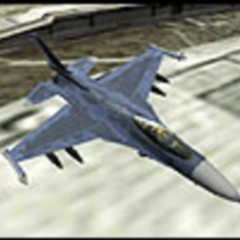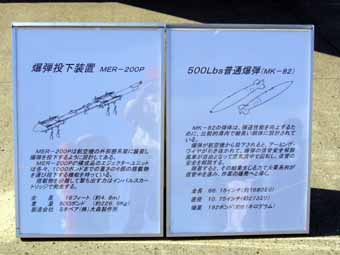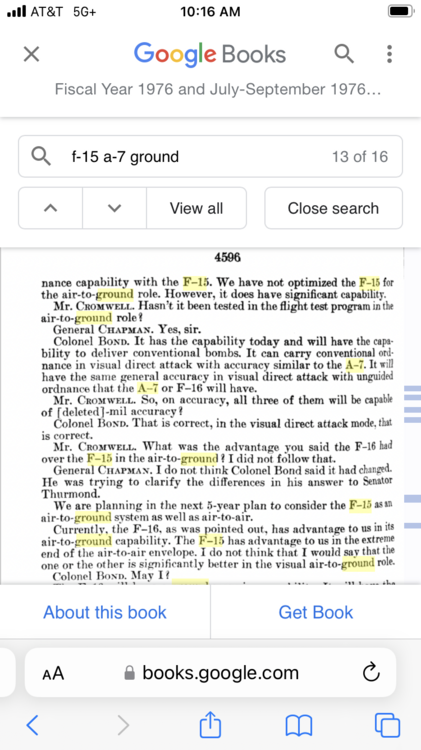-
Posts
1117 -
Joined
-
Last visited
Content Type
Profiles
Forums
Events
Everything posted by F-2
-
Rafale F1 hud footage and brief cockpit shot
-
Maybe now they are, and only the 80-100 or so they modified. But the original aircraft produced from the early 80s were MSIP I equivalent with some Japan specific changes mostly related to the electronic warfare and added Data link. JMSIP in the early 2000s brought about 80 planes to a similar standard to ongoing upgrades in the US, apg-63(v)1, increased computing power, and provisions for Japanese specific weapons like AAM-4 and AAM-5. It’s only now 40 years after introduction that these aircraft are becoming EX like. Here is a photo from 2010 with mk82, long before EX standard http://takaoka.zening.info/JSDF/JASDF/Mark_82_bomb/ 2004 http://tonkatsu298.pya.jp/07chi02.html https://f.hatena.ne.jp/uruya/20130804115221 2013 https://www.asahi-net.or.jp/~qk4j-fry/2006cts/soubi.htm 2006
-
The F-15J is a licensed produced F-15C.
-
I’m curious if the J-8 has any capacity for bfm or if it’s a pure interceptor
-
Hey I know this is air to ground but I just realized. Did we ever confirm AIM-9L?
-
I don’t know much about the numbering system of the PLAAF or PLAN, but could this be the last four digits of a bort number? Past or present?
-

Good News, this prove we may one day get J-10 in DCS.
F-2 replied to PLAAF's topic in Deka Ironwork Simulations
PLAN J-10AH targeting pod https://alert5.com/2016/08/10/planaf-j-10ah-with-kjdc01-targeting-pod-and-ls500j-lgb/ pretty unlikely but still a plane I like talking about. -
Fc3 su-27/33 cockpit, probably a mod, though they might be working on it. a J-8II with the advanced radar and Pl-11 would be great.
-
I have a little data. Some of this isn’t an issue for the F1. Very bare bones A2A only. The ECM suite was simplified till the F2. I have some patents related to RBE2 and I have some specifications we can go by. We would need to do a full CFD and engine simulation for the flight model. From F2 on the Rafale uses a new mission computer I have a white paper on The F1 does not use this https://adsabs.harvard.edu/full/1996ESASP.375..111N Note the F2 standard changed a lot and early version is much simpler then late https://www.key.aero/forum/modern-military-aviation/97029-rafale-production-order-status?page=3 I have this manual from a Rafale F2 flight simulator that was developed by a SME. This project was ended for copyright reasons, this will have to be resolved either by no using the name Rafale (like the M2000 and Razbam) or paying a license fee, as some FSX Rafale mods have chosen to do. Manuel Rafale F2.pdf
-
If we can’t do a Rafale F2/F3 though it might not be a bad idea to do a Rafale F1 AND Super Etendard. One for ground and one for air cover.
-
Your adorable!
-
https://books.google.com/books?id=wLI9AQAAIAAJ&pg=PA4596&dq=f-15+a-7+ground&hl=en&newbks=1&newbks_redir=0&source=gb_mobile_search&sa=X&ved=2ahUKEwjKjNj1sMz8AhXhFVkFHa7TC7MQ6AF6BAgEEAM#v=onepage&q=f-15 a-7 ground&f=false the USAF never did much in the way of meaningful training for air to ground but the capability was there. Only Israeli seems to have used it
-
Yea, I have the original though in Ukrainian which I’m sure ED has staff that can read it. https://studfile.net/preview/5383872/
-
Every air to air platform can be an air to ground platform at least once.
-
I know Aero Elite combat academy had a Easter egg scramble mission like this.
-
I posted a very detailed translated technical lecture on the N019 a few pages back. I don’t think it’s likely we’ll get a worse radar then that. There is only a single mode different between the Soviet and Warsaw pact N019 and it wasn’t used much in service. Т12 RLPK ENG.pdf
-

F/A18E/F Super Hornets block 1 and BLock 2 E/F ( lot 26)
F-2 replied to Kev2go's topic in DCS Core Wish List
Wouldn’t mind an AI super hornet as a strike craft with the upcoming dynamic campaign. -
Well at least you can get HARM on a fulcrum these days!
-
As I understand it this is actually one of the big reasons for the shift to BVR.
-
I think the prototype E had that scheme for a while. Not sure if it had been converted from an F-15B yet.
-
I’ve heard contradictory things on aspide/PL-11 in terms of range and speed. Some sources say it’s similar to AIM-7E with an inverse monopulse seeker (Like SkyFlash), while others say it’s refined enough to approach AIM-7F/M. One thing to note though is because of its articulating fins it’s considered to be far more maneuverable then similar missiles in its class, even if it’s lacking in range and speed.
-
F-16s that use sparrow F-16ADF (USA, Italy, Jordan, Pakistan, Thailand?) Bahrain Block 40 (no IFF bird splitter? Possibly during the gulf war, only AIM-7F operator?) Egypt Block 40 (often reported that the block 32 can but it does not seem to be the case) Singapore Block 52 Iraq block 52 Taiwan Block 20 I think all Block 40/42 and 50/52 have the software to fire sparrow but require special hard points that only a few operators ordered.
-
I was wondering if it would be ok for the AI F-16 to gain AIM-7 capabilities for different scenarios. We have and AI MLU, the Taiwanese version of which uses AIM-7 and a block 50, the Iraqi and Singapore block 52 use. Could the AI versions get this?
-
So these seem to be the documents held by the US government that we can get(a few are mixed in we cannot). They had other documents including a manual, wind tunnel, flight test, and breakdown of the fly by wire but these are export controlled and or proprietary information so I don’t intend to make any requests for them. As you can see some of these are hundreds or even thousands of pages. two other documents I am also trying to get are a U.S. government trip report to MELCO that includes flight test data on the J/APG-1 Engineering model. That’s provisional hardware but it would be very useful in figuring out the scanning algorithms (this has been largely the obstacle with implementation of AESA in flight sims) and a follow up report which has the specifications of the T/R modules on the final production radar. J/APG-1 is fox 1 only (AIM-7F/M) so no AAM-4, but it still the aircraft I grew up loving. I would at least like to start a mod when I get some of these. Fox 3 missiles were fairly uncommon in east Asia till the late 2000s anyway. Also this version of the F-2 was a support fighter first so the primary mission is ship hunting. FOIA_UL_Bib_2023-96.numbers
-
I asked point blank and they said their does not seem to be an issue with 3rd parties doing a Mig-29 it seems to just be ED proper.






